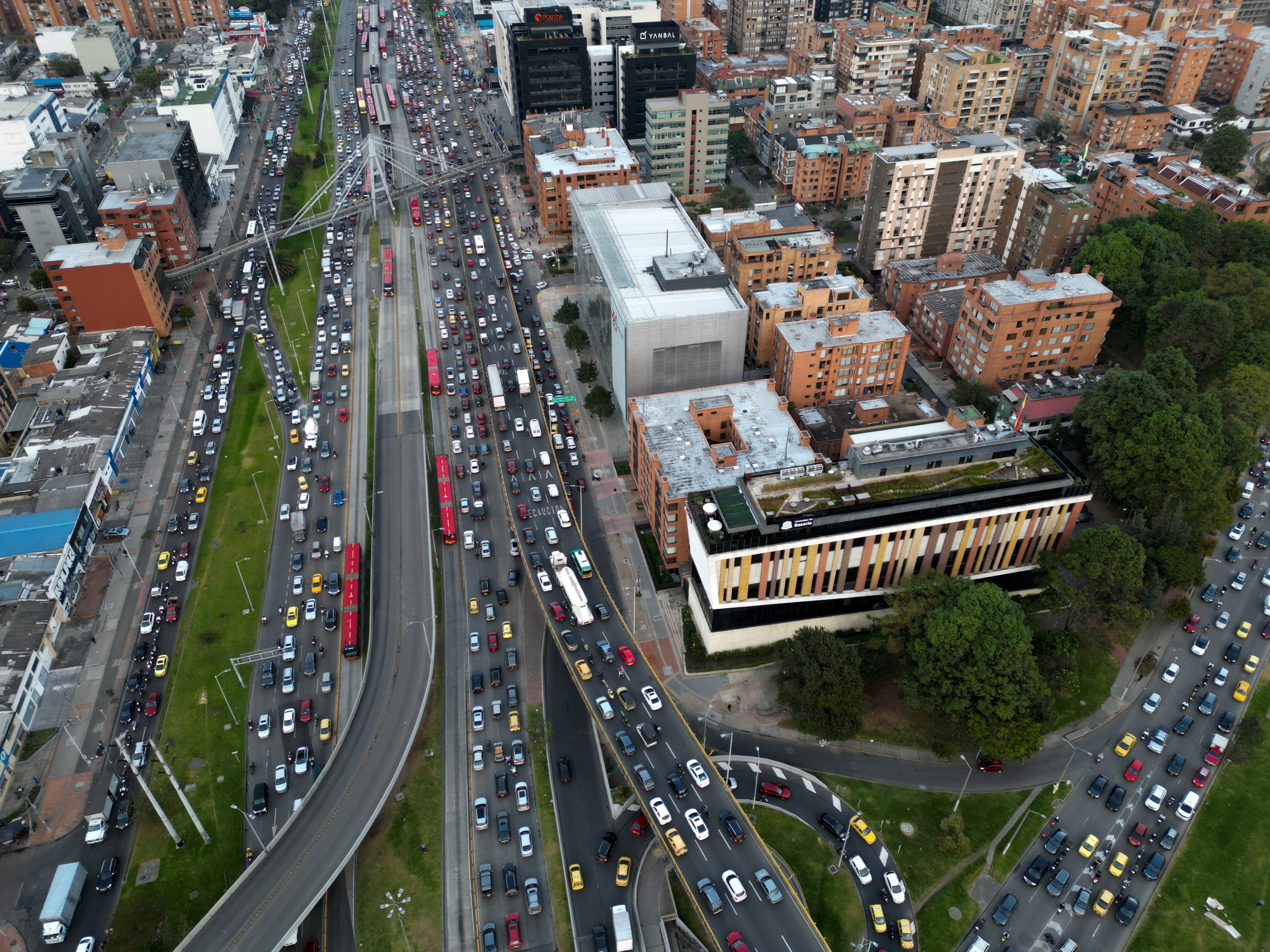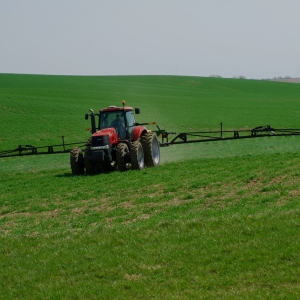The Stream, April 17, 2024: Bogotá Is Less Than Two Months Away From Potential ‘Day Zero’ Scenario, Leaders Warn

Traffic in Bogotá on December 15, 2023. Photo courtesy of Flickr/Creative Commons user Carlos Felipe Pardo
YOUR GLOBAL RUNDOWN
- Bogotá officials say just 54 days of water remain in the Colombian capital’s reservoirs, which sit at historic lows.
- Nearly 500 barriers were removed from freshwater waterways in Europe in 2023, setting a new record for the continent.
- The health of Albania’s Vjosë River, known as Europe’s last wild river, is threatened by development greenlit by its government.
- To prevent flooding and ice congestion on Russia’s Lena River, officials are strategically spreading coal dust atop the thickest ice plates.
The flooding of Lake Karla, one of Greece’s largest inland water bodies, is an existential risk to the agricultural valley’s heritage.
“It was a complete disaster … Even after the water recedes, we don’t know if the fields will be productive.” — Angelos Yamalis, a third-generation farmer whose family lost 50 hectares in a deluge of rain last September.
Drained in 1962, Greece’s Lake Karla was converted again from a valley to a wetlands ecosystem in 2018 in an effort to combat drought, Al Jazeera reports. But unpredictable and extreme rainfall since then has tripled the lake’s size, destroying crops and killing livestock as farmers and pastoralists reckon with their future on the land.
Many multigenerational families, who have had to abruptly change and adapt to new livelihoods, have turned to growing cotton. But advisers to the Greek government are suggesting a pivot away from the water-thirsty crop, despite its cultural and economic importance for the region’s residents. The construction of dozens of small dams in higher elevations around Lake Karla, to help trap rainwater, has also been proposed.
— Christian Thorsberg, Interim Stream Editor
Recent WaterNews from Circle of Blue
- Sault Tribe Challenges Michigan Fishing Deal, Chides ‘Preposterous’ Rules — The tribe argues they can’t be forced to follow rules crafted without their consent.
- World Water Day Reflects on Conflicts, Peace — Unreliable water is a significant social risk.
The Lead
The Amazonian drought exacerbated by dry El Niño weather patterns has put Bogotá, the capital city of Colombia and home to some 10 million people, on the brink of a Day Zero scenario, the Guardian reports.
Just 54 days of water remain in the city’s reservoirs, officials estimate, if the drought continues. Water levels in the Chingaza reservoir, which supplies 70 percent of Bogotá’s water, are at just 16 percent – historic lows. To conserve, officials have divided the city into nine districts, which will experience 24-hour disconnections from the water grid on a daily rotation. Carlos Fernando Galán, Bogotá’s mayor, is urging that couples shower together and embrace other behavioral changes to help minimize water use.
The crisis coincides with the spread of wildfires across Colombia, neighboring Venezuela, and nearby Guatemala, as Mexico City — whose metropolitan area comprises 22 million people — continues to heavily ration water supplies ahead of its own potential calamity.
This Week’s Top Water Stories, Told In Numbers
487
Number of river barriers removed across 15 European countries in 2023, shattering the previous mark of 325 set in 2022, according to a new report from Dam Removal Europe. Weirs, culverts, and dams — in that order — were the most common types of structures taken out of waterways, allowing for the reconnection of more than 2,600 river miles. France led the way, removing 156 barriers, followed by Spain (95), Sweden (81), and Denmark (72).
0
Number of dams on the Vjosë River, which flows unblemished for 170 miles through Albania and as such is known as Europe’s last wild river — a biodiversity hotspot and refuge for freshwater birds, fish, and amphibians. Its river delta, home of the Nartë lagoon, is also Europe’s largest. But Vjosë shores are soon to be riddled with development projects — new luxury villas and hotels — bankrolled in part by Jared Kushner, former U.S. President Donald Trump’s son-in-law. Environmental activists and scientists are decrying the Albanian government’s decision to allow such construction, filing suit in public court, Yale Environment 360 reports.
On the Radar
Workers in Yakutia, Russia’s largest republic located in the country’s far east, are spreading black coal dust atop the frozen Lena River in an effort to prevent spring floods, Reuters reports. The substance, due to its dark color, will heat up in the sun and help to gradually melt the river’s thickest ice plates — preventing large-scale flooding and ice congestion on the river when spring warmth arrives.
More Water News
Oahu Water Crisis: Ongoing drought, pollution, and seawater intrusion are putting the most populous Hawaiian island, home to nearly one million people, “on the verge of a greater catastrophe,” CBS News reports.
Pine Ridge Reservation: The Oglala Sioux Tribe, in an effort to prevent and combat wildfires on their land, will be reviving dormant reservoirs that have elevated levels of arsenic, Grist reports.
Christian Thorsberg is an environmental writer from Chicago. He is passionate about climate and cultural phenomena that often appear slow or invisible, and he examines these themes in his journalism, poetry, and fiction.







Thanks for sharing this with us and sharing this information with us and we hope that this information will help us all to understand the importance of this project and gobble warm water issues are affected our community and our lives to serve as Humans our natural resources and environment for future generations!Ms.Dorothea S.Williams!This information needs to be shared with all of us and our community members and Scientists‘Schools’ across the world! It Takes us all together to create change for Future Generations!☝️